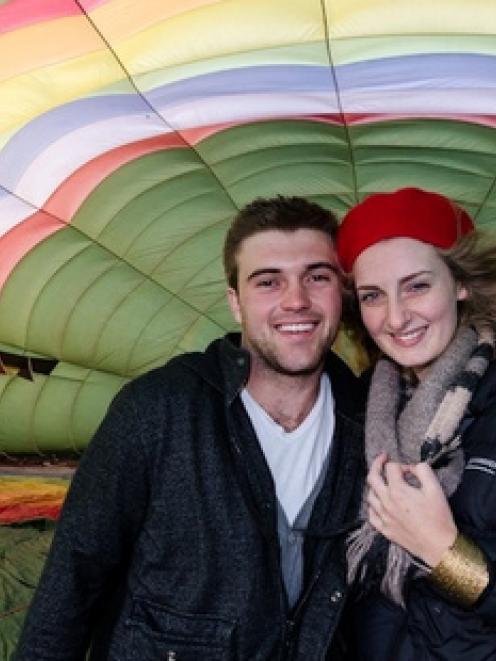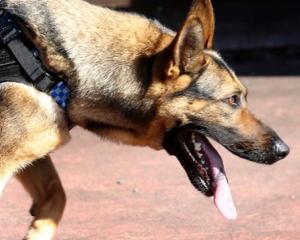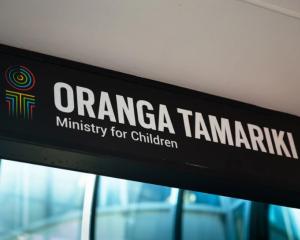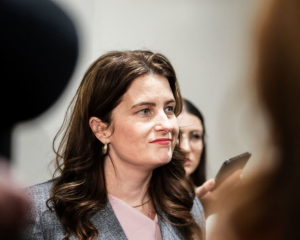
Eleven people lost their lives on January 7, 2012, when the balloon they were in hit power lines, caught fire and crashed into a field near Carterton in Wairarapa.
A two-week inquest was held in Wellington last year. It began in May, was adjourned, and then resumed in July.
Included in Coroner Ryan's findings were 19 recommendations.
One of these recommendations called on the Ministry of Transport to make an amendment to the Civil Aviation Act that would now enable the CAA and police to undertake random drug testing.
At the time of the crash there were no rules in place that allowed random drug and alcohol testing in adventure aviation.
Coroner Ryan's recommendation comes after it was revealed traces of cannabis were found in pilot Lance Hopping's system during his post mortem.
In his findings Coroner Ryan said based on the evidence given by toxicologist at the inquest, the level of THC in Mr Hopping's body at the time of his post mortem could not be safely relied upon as proving that he smoked cannabis within a few hours of the flight.
He also said while there was a chance Mr Hopping was effected during the flight from the "carry-over" effect of cannabis use, there was "insufficient evidence" to make it a finding.
Coroner Ryan said in his findings that as an "experienced and competent balloon pilot" Mr Hopping's decisions on the day of the crash "seem to be inexplicable".
"... the pilot failed in his duty to fly the balloon in such a way as to prevent the balloon coming into contact with the power lines."
Allan Still, the father of victim Alexis Still, 20, who jumped from the burning balloon with her boyfriend Chrisjan Jordaan, 21, said the coroner had completed a thorough examination.
"We believe that his recommendations are the right ones to make, bearing in mind that a favoured outcome from this terrible tragedy is that we end up with a safer adventure tourism industry.
"It's the meaty stuff that matters and we think the stuff around drug testing is important... we think that is something that should be basically endorsed through legislation.
"We want mandatory and random drug testing. Mandatory for medical certification and we would like random just as a check in system, the same as other countries such as Australia and the UK and the US has, and we don't see any reason why the New Zealand public or visitors to this country should be denied that privilege."
Sarah Scarlett, the daughter of victim Howard Cox, 71, and step-daughter of Diana Cox, 63, agreed with Mr Still.
Ms Scarlett said she would now like to see the "key people" take Coroner Ryan's recommendations on board, so appropriate changes could be made to the law.
"We want action now, its preventable if these things had been in place we wouldn't be having an inquest and we wouldn't be here today having this conversation."
She said she believed random drug testing would have "knocked" Mr Hopping "out of the game".
Coroner Ryan also recommended the CAA make pilots' credentials available to the public.
Ms Scarlett said the easier it was for people to be able to check credentials in the adventure tourism industry - the better.
"You go into a restaurant and you see their certificate of hygiene, you go in a taxi and you see this person is registered. We need to be able to have a transparent system.
Director of Civil Aviation, Graeme Harris, said there had been several changes to the way the CAA operates since the accident, improving adventure aviation safety in New Zealand.
Since the crash all adventure aviation operations, including those in commercial hot air ballooning, were now required to comply with Civil Aviation Rule Part 115, which required operators to have a drug and alcohol programme acceptable to the CAA in place.
As part of this programme operators were allowed to employ a third party and request a drug test if they had reasonable cause to suspect a staff member could be under the influence, or post incident - if an accident or incident occurred.
Operators were also allowed to undertake pre-employment drug testing and random drug testing.
Drug testing was still not legally required to take place in any medical examinations.
Mr Harris said the coroner's recommendation for alcohol and drug testing in aviation was in line with the CAA's long standing position on drug and alcohol use.
"We are encouraged that the Ministry of Transport is currently consulting on options for stronger measures to reducing the risk of alcohol and drug impairment in aviation and other modes of transport such as rail," Mr Harris said.
He said the CAA and the hot air ballooning community had been working hard to improve aviation safety.
"The introduction of Civil Aviation Rule Part 115 has brought a much higher level of safety to this sector and we are pleased that the hot air balloon community are embracing this rule, and in many cases have bought in systems and processes that are more stringent than what is required."
Mr Harris said the CAA would consider the recommendations carefully, and make appropriate changes to improve safety where it was within its powers.
*
THE VICTIMS:
Valerie Bennett, 70, Diana Cox, 63, Howard Cox, 71, Ann Dean, 65, Desmond Dean, 70, Denise Dellabarca, 58, Belinda Harter, 49, Stephen Hopkirk, 50, Lance Hopping, 53, Chrisjan Jordaan, 21, and Alexis Still, 20.
*
CORONER PETER RYAN'S RECOMMENDATIONS:
- The CAA should continue its current efforts to educate and remind holders of commercial pilot licences of the legal requirement and importance of maintaining a current medical certificate.
- The CAA should identify opportunities to encourage third parties to notify it of any concerns about the medical certification status of pilots, and implement strategies to achieve that end.
- The CAA should monitor medical licences for all adventure aviation pilots so they are alerted when they expire.
- The CAA should ensure that all pilots carrying out flights for an adventure aviation operator are required to undergo drug testing as part of their initial and ongoing medical certification.
- All adventure aviation operators should obtain approval from all pilots employed by them and then post on their websites information about those pilots, including their certification or licensing and medical certification status to enable the public to assess whether to fly with those pilots.
- The CAA and Ministry of Transport should consider making info about pilots and operators involved in adventure aviation industry, accessible to the public.
- The CAA and Ministry of Transport should consider requiring adventure aviation operators to provide medical certificate information for the pilot in command of a particular flight to intending passengers, prior to the flight occurring.
- The Ministry of Transport should consider an amendment to the Civil Aviation Act, so the CAA or Police are able to undertake random drug and alcohol testing on adventure aviation pilots.
- The Ministry of Transport should consider whether the act should be amended to include tougher sanctions if an adventure aviation pilot tests positive for drugs or cannabis.
- The CAA should continue its efforts in engaging with operators, through its certification activities, to identify areas where the expositions can be improved and/or where they might benefit from the experience or practice of other industry participants.
- The operations manuals of commercial balloon adventure aviation certificate holders should require carriage of GPS systems to assist operators and the CAA to determine proximity of the balloon to power lines during flights.
- The CAA should consider instructing passengers to be vigilant for wires and poles and alert the pilot to power line proximity in pre-flight briefings. Passengers should also be made aware that commercial balloons do not fly within certain distances of power lines at any times, and be instructed on how to make a complaint if they consider there has been a breach of flight rules explained in the briefing.
- The CAA should consider whether adventure aviation operators should be required to have a second crew member on board balloon flights, where the passenger count exceeds a specific number.
- The flight test standard guide should be amended to include specific training on the topic of power line contact.
- Consideration should be given to "satisfactory performance" of the flight review task relating to power line contact requiring the pilot to demonstrate a high level of situational awareness in regards to obstacles, understanding of dangers associated with power lines and understanding of procedures for avoidance.
- The CAA should consider providing advice to international regulators and other relevant agencies on the details of this particular case and potential lessons learned for balloon operation safety in other jurisdictions.
- The CAA should give consideration to requiring balloon baskets used by adventure aviation operators to be fitted with some means to prevent power lines becoming trapped over the rim in the event of contact with power lines.
By Nikki Papatsoumas of NZME. News Service












